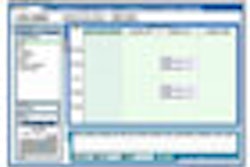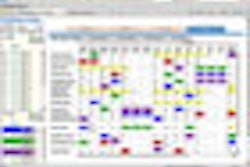Having access to top-notch medical technology for treating disease is all well and good, but it's still important to order the right test at the right time for the right condition. With the high cost of medical imaging a hot topic in both medical and governmental circles these days, the more efficient hospitals and imaging centers can make their practices, the better.
Researchers at Massachusetts General Hospital (MGH) and Harvard Medical School in Boston tackled the question of whether a Web-based decision-support program could help make ordering high-cost imaging exams more "sensitive and specific." Pragya Dang, M.B.B.S., and colleagues sought to assess the effect of a Web-based radiology order entry system (WBRS) on the volume and yield of imaging exams. Dang presented the group's findings at the 2007 RSNA meeting in Chicago.
"According to the American College of Radiology, diagnostic imaging is the fastest-growing medical expenditure," Dang said. "Overuse of imaging exams may be contributing to rising healthcare costs, and may also be exposing patients to risks from radiation or contrast media-related reactions."
The researchers developed the WBRS and selected all CT (69,389) and MR (41,170) exams ordered with the program between the last quarter of 2004 and the first quarter of 2007. They established "appropriateness zones" of low, intermediate, and high utility. Using data mining and analytical software, they assessed the trend of specified radiological findings and appropriateness zones in the reports of CT and MRI exams performed in 2005 and 2006.
Using the WBRS, low-utility exams decreased and high-utility exams increased, according to Dang.
|
||||||||||||
|
||||||||||||
The volume of CT and MR studies decreased by 44.3% and 31%, respectively, and the rate of specified radiological findings in the radiology reports increased from 74% to 84% for CT and 73% to 85% for MR.
"We found the WBRS was very helpful in improving CT and MR utility patterns," Dang said.
During the same session, researchers at Thomas Jefferson University in Philadelphia examined geographic variation in MRI, finding substantial differences in usage. Laurence Parker, Ph.D., and colleagues used data from the Centers for Medicare and Medicaid Services (CMS) 2004 Limited Dataset, which is a 5% random sample of charges for fee-for-service Medicare beneficiaries.
Parker and his group extracted data for MRI claims, and found that overall MRI utilization was 155 exams per every 1,000 beneficiaries, with the five highest states for MRI use being Delaware (241), Florida (230), Alabama (208), Maryland (207), and Texas (204).
Why usage of MRI varies geographically requires further study, Parker said. But a tool like WBRS could help hospitals better understand whether high-cost modalities such as CT or MRI are over- or underused due to radiology exam ordering patterns, according to Dang.
By Kate Madden Yee
AuntMinnie.com staff writer
December 14, 2007
Related Reading
Same-specialty referring physicians use imaging more frequently, study finds, November 8, 2007
Maryland court backs state's self-referral law, October 26, 2007
Imaging self-referral comes under scrutiny in California, April 20, 2007
Illinois AG's lawsuit may chill equipment leasing deals, January 24, 2007
Illinois AG joins leasing suit against MRI centers, January 18, 2007
Copyright © 2007 AuntMinnie.com




















